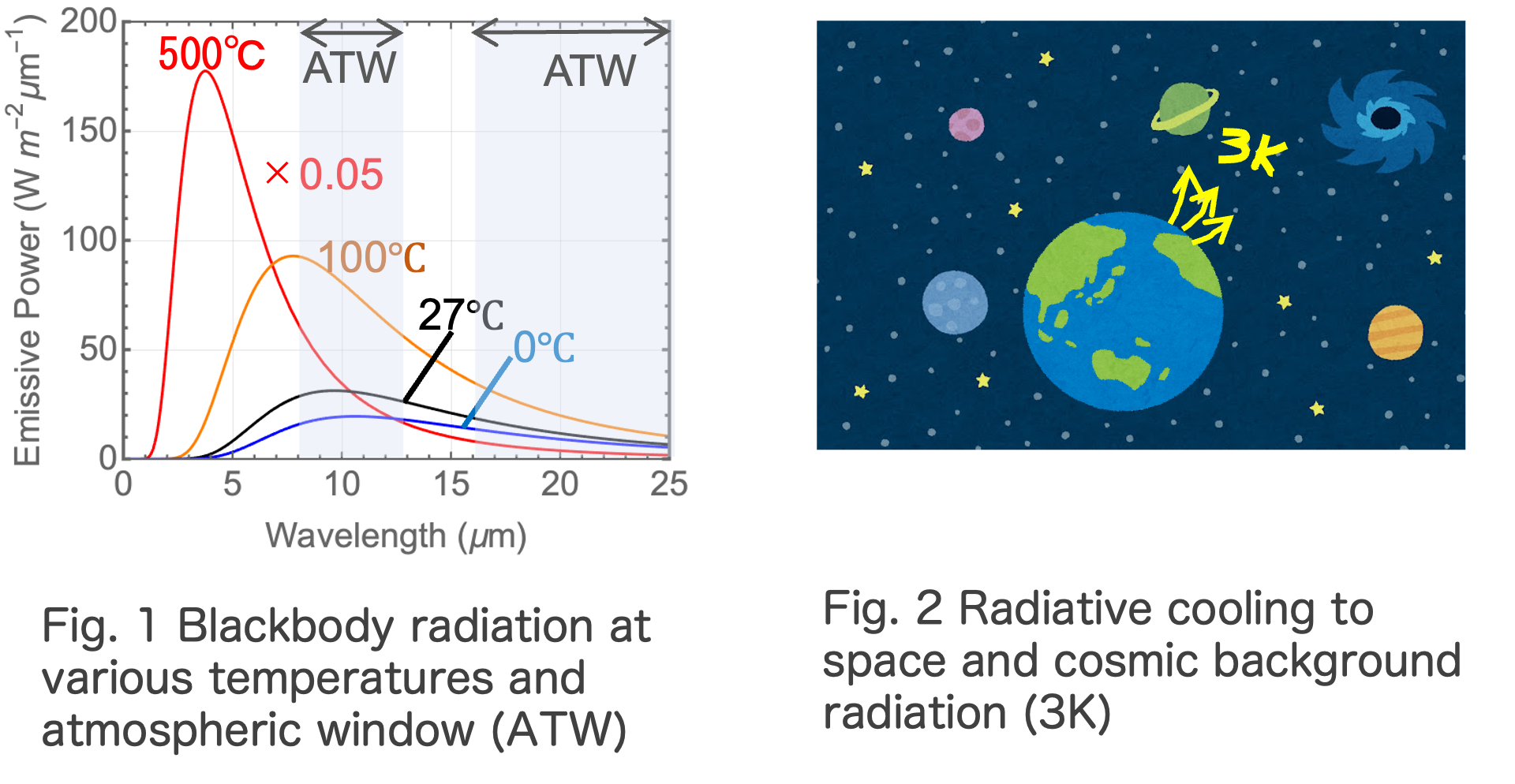Radiative Cooling (RC)
Cooling an object usually requires electrical energy. Energy can be saved if it becomes possible to cool an object without electricity. Furthermore, we can establish a means to generate new energy using elements that convert temperature differences into electricity.
Electromagnetic waves are radiated from objects in proportion to their temperature. This is called blackbody radiation. This electromagnetic wave has a wide spectral range, but at room temperature, it peaks in the infrared region around 10μm wavelength. This means that all objects (even people) lose heat due to blackbody radiation, but they are not normally cooled because they absorb blackbody radiation from their surroundings to reach equilibrium.
Efficient radiative cooling requires materials with suitable optical properties. Specifically, the material must have strong emissivity in the wavelength region with high atmospheric transmittance, known as the "atmospheric window (ATW)," and low emissivity in other wavelength regions. Furthermore, the material must have high reflectance and transmittance under sunlight without absorbing light in the sunlight wavelength region. In our laboratory, we are studying polymeric materials and metamaterials with these properties.
We have also developed an environmental power generation device that utilizes the temperature difference generated by radiative cooling and has achieved high power generation efficiency. This device is characterized by its ability to generate power at night.

Return to Research

